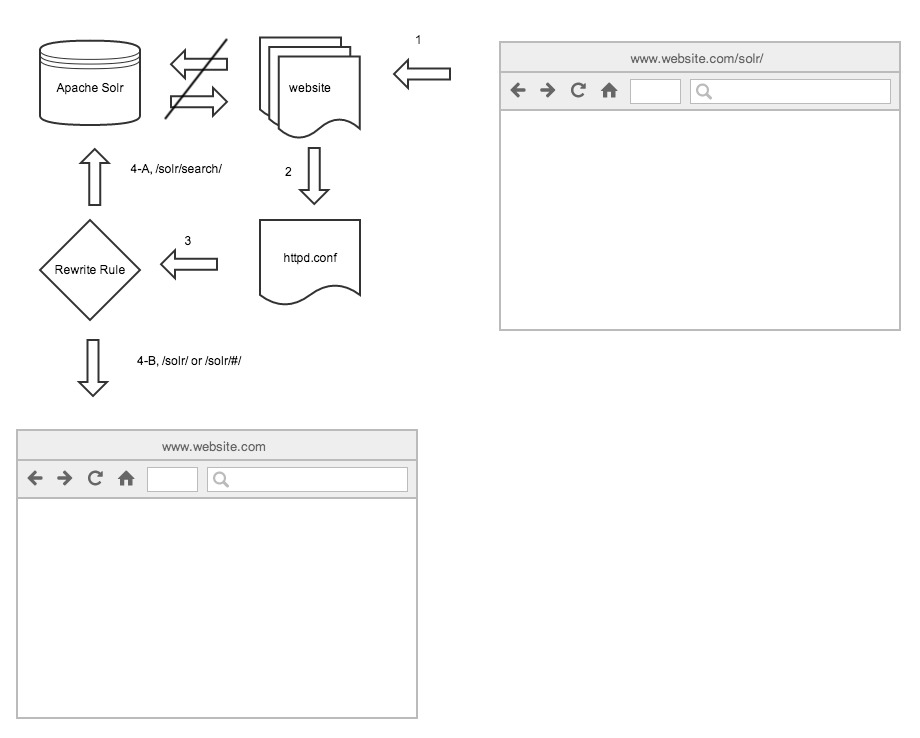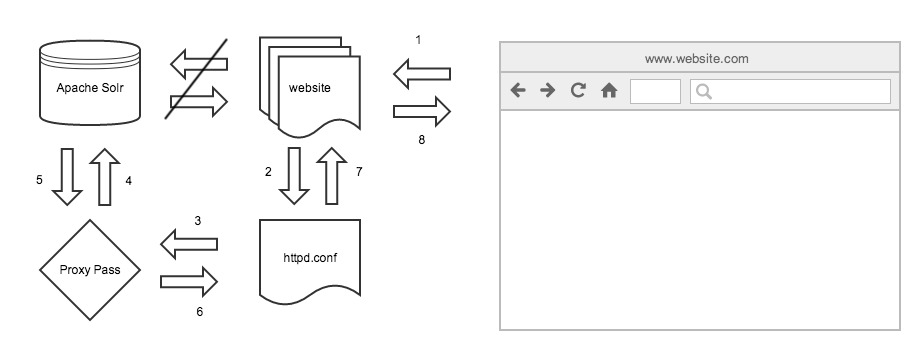Here are the Eight Terminal Utilities Every OS X Command Line User Should Know as well as An A-Z Index of the Apple OS X command line.
Monthly Archives: May 2014
Apply a Rewrite Directive to a Solr Instance
After exposing the Solr endpoint with a reverse proxy, it’s important to note that it also exposes the Solr admin panel to the end-user. This is not desired.
Problem:
- Solr’s admin panel becomes exposed from the reverse proxy.
Solutions:
- Perform a redirect to website.com’s homepage.
- RewriteRule directive, mod_rewrite – Apache HTTP Server.
RewriteRule ^/solr/$ / [R=301,L,DPI]
Reverse Proxy a Solr Instance
It’s encouraged that you secure your Solr instance by placing the application on a different file server and behind a firewall. That’s an issue if you are trying to consume data from the Solr instance leveraging AJAX techniques.
Problems:
- www.website.com and Apache Solr live on separate boxes.
- A firewall protecting Apache Solr plus the cross-domain issue does not expose the necessary end-point to consume via AJAX.
- Depending on your sys admin setups, Solr may not live on a fully qualified domain (ie. http://12.34.56.789:8983/solr/#/)
- An AJAX call to consume the Solr instance’s JSON/XML won’t work cross-domain.
Solution:
- Reverse Proxy directive, mod_proxy – Apache HTTP Server
- This allows for an endpoint that is visible to the browser and we can consume the JSON/XML that rests within the Solr instance.
ProxyPass /solr http://12.34.56.789:8983/solr/#/
ProxyPassReverse /solr http://12.34.56.789:8983/solr/#/
Don’t forget to apply a RewriteRule Directive to protect the Solr admin panel, once you’ve exposed it to the browser!

